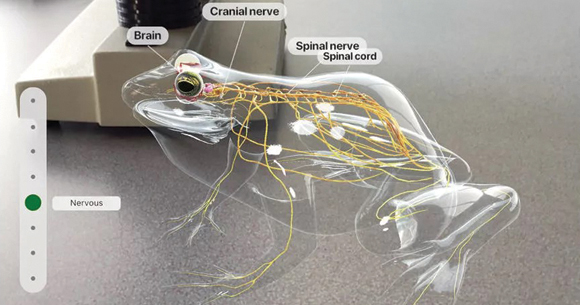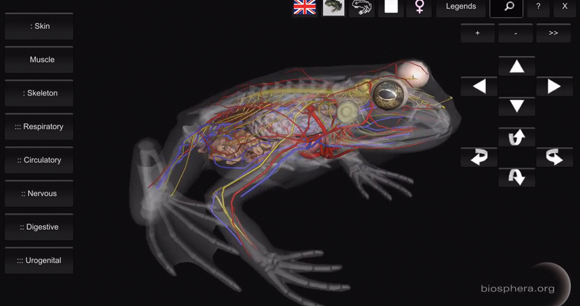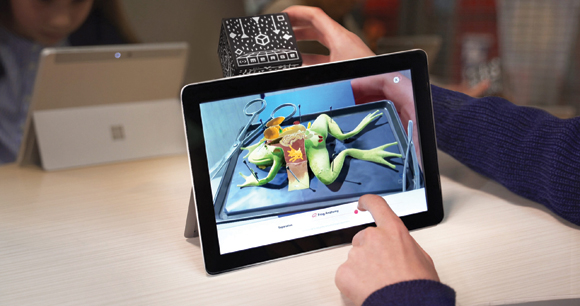In North America, animal dissection remains commonplace in K-12 science education. At a time when numerous interactive and immersive alternatives are available, it’s time to end this outdated practice once and for all by adopting non-animal teaching methods.
Non-animal methods are not only more humane, but also more effective, more inclusive, safer, and more economical. A literature review conducted by the Animals in Science Policy Institute (AiSPI) indicated that in 88 percent of studies, non-animal methods were superior or equivalent to dissection. Non-animal methods reduce the emotional, ethical, and religious barriers to education. They also avoid the use of sharp scalpels or harsh preservative chemicals. Contrary to popular belief, many non-animal methods actually cost less than preserved animals, and there are typically no recurring annual costs.
Despite the benefits of non-animal methods, many teachers report that they do not have the time to research dissection alternatives. To help teachers make the transition, AWI has teamed up with AiSPI to create a list of some of the most effective and engaging non-animal methods currently available. There are a variety of excellent options, and many are feasible for online education.

Froggipedia is geared toward middle school students and features a fascinating and easy-to-use 3D model of a breathing frog. It offers the following modes: (1) “Life Cycle,” which has an animation feature that allows you to move a cursor to view the frog submerged in a pond as it develops from a single-celled egg to a tadpole and eventually to an adult frog. (2) “Augmented Reality Anatomy,” which works like a camera that projects the frog onto wherever you point your lens, so the frog can appear to be in your hand or on your desk. You can “peel back layers” and view individual body systems inside the frog—for example, the skeletal system, the muscular system, or the digestive system. (3) “Dissection,” with which you can conduct a traditional-style dissection using your finger or an Apple Pencil to “cut” through the frog’s skin and muscle, locating different organs and learning about their function. The app also includes a quiz with eight organs to identify. Froggipedia was awarded the “iPad App of the Year” in 2018. Version 3.0 can be purchased for just $3.99 in the Apple App Store (available only for iPhone and iPad) and is available in 8 languages.
3D Frog Anatomy by Biosphera is an interactive model that permits the user to view the various systems of the frog individually or in combination and from any angle, along with the option to zoom in and out. You can learn anatomy by hovering over an area of the frog to see the name of the particular body part. There are 11 other Biosphera models, including cat, pig, fish, and human. Pricing varies depending on the species and device: The 3D Frog Anatomy for mobile versions (Android, Apple, or Windows devices) is $11.99, and the desktop software costs $26 for individual use and $39 for multiple users.

Frog Paper Dissection—Scienstructable 3D Dissection Model by Getting Nerdy with Mel and Gerdy enjoys support from teachers and students alike. It is a great option for students who do not have easy access to an electronic device. This low-tech (or no-tech) model is geared toward those in grades 4 to 12, but it is typically used by 7th graders. The cost of the frog model is $22.95 and the price drops if a number of licenses are purchased at once. There are a wide variety of other species options, including cat, fetal pig, earthworm, and crayfish. Patience is required to cut out all of the individual pieces, but there are clear instructions on how to assemble the models, and there is an online guide to making repairs and a suggestion for how best to display the models.
Merge Cube is an educational tool that can provide a fully immersive experience, but it is one of the more costly options when used to its full capacity. It consists of a soft foam 5-inch cube that costs $19.99 and is used in combination with the Merge Explorer app, which can be launched on an Apple, Android, or Windows 10 device. This app, which runs $9.99/month for individual use or at a discounted price for schools, contains dozens of STEM-related components. When the device is pointed at the cube, it transforms it into a 3D model on the device’s screen that can be held and rotated. A Frog’s Life—one of the app’s components—allows you to watch a frog’s life cycle and perform a virtual dissection. The Merge Explorer app can be made more interactive if used with a virtual reality headset that costs $49.99. While the Merge Cube offers an impressive array of activities for a number of STEM-related disciplines, we found its frog dissection app to be less impressive than other apps described above. This system has received a lot of acclaim, including the Parents’ Choice Award, the Academics’ Choice Brain Toy Award, and the Tech and Learning Award of Excellence. The manufacturer suggests it is suitable for ages 10 and above.

Other options include Frog Dissection by GP Strategies (an older app—we did not consider the graphics as good), 3D Anatomica (detailed human anatomy, not nonhuman animals), and SynFrog by SynDaver (a synthetic frog that can be dissected without the blood and bad smells—kids enjoyed it, but at $150 for one frog model that also requires special handling, it is one of the more expensive options).